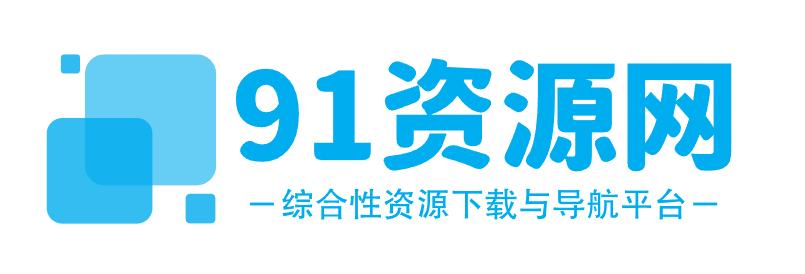在高并发场景下,java框架可助力提升应用程序性能。具体而言:netty:异步网络通信框架,支持多种协议,可构建高性能网络应用。reactor模式:设计模式,通过事件循环处理并发连接,适用于高并发web服务器。利用Java框架实现高并发
在高并发场景中,系统的性能和可伸缩性至关重要。Java提供了许多框架来帮助开发者实现高并发的应用程序。本文将介绍一些流行的Java框架,并通过实战案例展示如何使用它们来提升并发性能。
Netty
立即学习“Java免费学习笔记(深入)”;
点击下载“电脑DLL/驱动修复工具”;
Netty是一个异步、事件驱动的网络通信框架,它允许开发者构建高性能、高可伸缩的网络应用程序。Netty支持多种协议,如TCP、UDP、HTTP和WebSocket。
实战案例:使用Netty构建高并发聊天服务器import io.netty.bootstrap.ServerBootstrap;
import io.netty.channel.ChannelFuture;
import io.netty.channel.ChannelInitializer;
import io.netty.channel.EventLoopGroup;
import io.netty.channel.nio.NioEventLoopGroup;
import io.netty.channel.socket.SocketChannel;
import io.netty.channel.socket.nio.NioServerSocketChannel;
import io.netty.handler.codec.string.StringDecoder;
import io.netty.handler.codec.string.StringEncoder;
public class NettyChatServer {
public static void main(String[] args) throws Exception {
EventLoopGroup bossGroup = new NioEventLoopGroup(); // 负责处理客户端连接
EventLoopGroup workerGroup = new NioEventLoopGroup(); // 负责处理客户端请求
ServerBootstrap serverBootstrap = new ServerBootstrap();
serverBootstrap.group(bossGroup, workerGroup)
.channel(NioServerSocketChannel.class) // 设置服务器端通道类型
.childHandler(new ChannelInitializer<SocketChannel>() {
@Override
protected void initChannel(SocketChannel ch) throws Exception {
// 添加编码器,将字符串转换为字节数组
ch.pipeline().addLast(new StringEncoder());
// 添加解码器,将字节数组转换为字符串
ch.pipeline().addLast(new StringDecoder());
// 添加聊天处理器
ch.pipeline().addLast(new ChatServerHandler());
}
});
ChannelFuture channelFuture = serverBootstrap.bind(8080).sync();
channelFuture.channel().closeFuture().sync();
}}登录后复制Reactor模式Reactor模式是一种设计模式,它允许一个单线程处理多个并发连接。Reactor模式的实现依赖于事件循环,它不断的轮询事件队列并处理发生的事件。实战案例:使用Reactor模式构建高并发Web服务器import java.io.IOException;
import java.net.InetSocketAddress;
import java.nio.ByteBuffer;
import java.nio.channels.SelectionKey;
import java.nio.channels.Selector;
import java.nio.channels.ServerSocketChannel;
import java.nio.channels.SocketChannel;
import java.util.Iterator;
import java.util.Set;
public class ReactorWebServer {
private ServerSocketChannel serverSocketChannel;
public ReactorWebServer(int port) throws IOException {
// 创建服务器端套接字通道
serverSocketChannel = ServerSocketChannel.open();
// 绑定端口号
serverSocketChannel.bind(new InetSocketAddress(port));
// 设置为非阻塞模式
serverSocketChannel.configureBlocking(false);
}
public void start() throws IOException {
// 创建一个多路复用器
Selector selector = Selector.open();
// 将服务器端套接字通道注册到多路复用器上,监听接收事件
serverSocketChannel.register(selector, SelectionKey.OP_ACCEPT);
while (true) {
// 阻塞直到至少有一个事件发生
selector.select();
// 获取所有发生的事件
Set<SelectionKey> selectedKeys = selector.selectedKeys();
Iterator<SelectionKey> iterator = selectedKeys.iterator();
while (iterator.hasNext()) {
SelectionKey key = iterator.next();
// 检测是否为接收事件
if (key.isAcceptable()) {
accept(key);
}
// 检测是否为可读事件
else if (key.isReadable()) {
read(key);
}
// 检测是否为可写事件
else if (key.isWritable()) {
write(key);
}
iterator.remove();
}
}
}
private void accept(SelectionKey key) throws IOException {
// 获取客户端套接字通道
SocketChannel clientSocketChannel = ((ServerSocketChannel) key.channel()).accept();
// 设置客户端套接字通道为非阻塞模式
clientSocketChannel.configureBlocking(false);
// 向客户端套接字通道发送欢迎信息
ByteBuffer welcomeBuffer = ByteBuffer.wrap("Welcome to the Reactor Web Server!\n".getBytes());
clientSocketChannel.write(welcomeBuffer);
// 将客户端套接字通道注册到多路复用器上,监听读事件
clientSocketChannel.register(key.selector(), SelectionKey.OP_READ);
}
private void read(SelectionKey key) throws IOException {
// 获取客户端套接字通道
SocketChannel clientSocketChannel = (SocketChannel) key.channel();
// 创建字节缓冲区
ByteBuffer readBuffer = ByteBuffer.allocate(1024);
// 从客户端套接字通道中读取数据
int readBytes = clientSocketChannel.read(readBuffer);
if (readBytes > 0) {
// 将字节缓冲区翻转,以便从头部开始读取数据
readBuffer.flip();
// 将数据写入控制台
System.out.println(new String(readBuffer.array(), 0, readBytes));
// 将数据响应给客户端
ByteBuffer writeBuffer = ByteBuffer.wrap(readBuffer.array(), 0, readBytes);
clientSocketChannel.write(writeBuffer);
}
else if (readBytes == -1) {
// 客户端套接字通道已经关闭,关闭客户端套接字通道
clientSocketChannel.close();
}
}
private void write(SelectionKey key) throws IOException {
// 获取客户端套接字通道
SocketChannel clientSocketChannel = (SocketChannel) key.channel();
// 创建字节缓冲区
ByteBuffer writeBuffer = ByteBuffer.allocate(1024);
// 从控制台读取数据
String data = System.console().readLine();
// 将数据写入字节缓冲区
writeBuffer.put(data.getBytes());
// 将字节缓冲区翻转,以便从头部开始写入数据
writeBuffer.flip();
// 将数据写入客户端套接字通道
clientSocketChannel.write(writeBuffer);
}
public static void main(String[] args) throws IOException {登录后复制以上就是如何利用Java框架实现高并发?的详细内容,更多请关注php中文网其它相关文章! 




CurtisPoozy2 个月前
发表在:关于我们Некоторые вебмастера...
Tommypoike3 个月前
发表在:关于我们hi
AmandaIncaboraa5 个月前
发表在:关于我们"我很想找出激励你的东西。 和我聊天 h...
AmandaIncabora25 个月前
发表在:关于我们我在等你的留言! 过来打个招呼! ...
AmandaIncaborac5 个月前
发表在:关于我们让我们今晚难忘...你的地方还是我的? ...
BryanDen6 个月前
发表在:关于我们Самый быстрый и безо...
91资源网站长-冰晨11 个月前
发表在:【账号直充】爱奇艺黄金VIP会员『1个月』官方直充丨立即到账丨24小时全天秒单!不错不错,价格比官方便宜
91资源网站长-冰晨11 个月前
发表在:2022零基础Java入门视频课程不错,学习一下